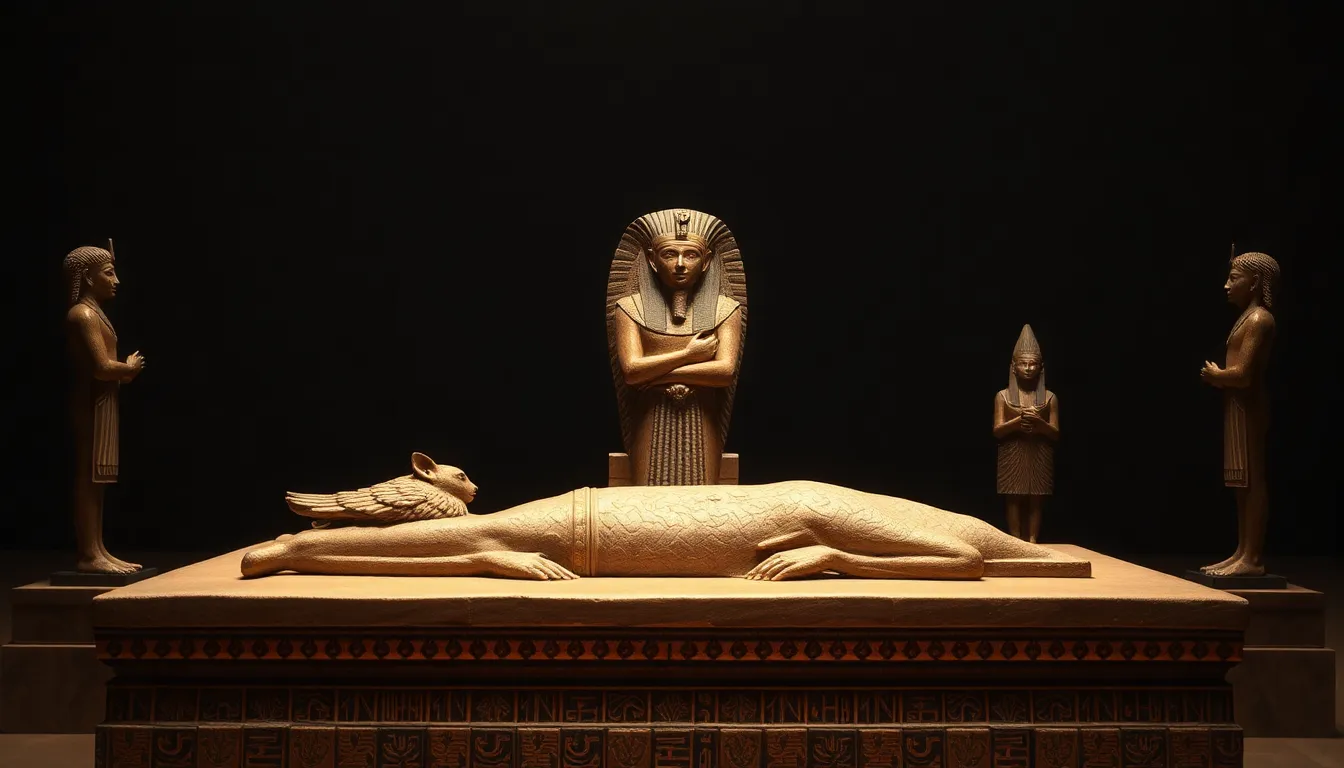The Symbolism of Funerary Art in Ancient Egypt
I. Introduction
Funerary art refers to the artistic creations that were designed to honor and ensure the safe passage of the deceased into the afterlife. In ancient Egypt, this art was not merely aesthetic but deeply imbued with religious and cultural significance.
Funerary art played a crucial role in ancient Egyptian culture, reflecting their beliefs about death and the afterlife. The Egyptians viewed death as a transition rather than an end, which led to elaborate rituals and artistic expressions aimed at providing for the deceased in the afterlife.
This article will explore the rich symbolism embedded in funerary art, examining its historical context, common themes, iconography, architectural elements, and notable case studies.
II. Historical Context of Funerary Art in Ancient Egypt
The evolution of funerary practices in ancient Egypt can be traced from the Old Kingdom (c. 2686–2181 BCE) through to the Ptolemaic period (c. 332–30 BCE). Initially, simple burial methods were employed, but as beliefs about the afterlife became more intricate, so too did the art associated with it.
Religion played a vital role in shaping funerary art, as the Egyptians believed that the afterlife was a continuation of life on earth. This belief system influenced the construction of elaborate tombs, the inclusion of various objects, and the depiction of rituals.
Social status significantly impacted funerary art; the more affluent individuals were able to afford grander tombs and more intricate artworks, reflecting their status and beliefs about their place in the afterlife.
III. Common Themes in Funerary Art
Several recurring themes can be identified in ancient Egyptian funerary art:
- The representation of the afterlife: Artworks often depicted scenes from the afterlife, showcasing the journey of the soul and its encounters with deities.
- Symbolism of immortality and resurrection: Many symbols, such as the Ankh, signify eternal life and the cycle of death and rebirth.
- Depictions of daily life and sustenance: Funerary art frequently illustrated daily activities, emphasizing that the deceased would continue to need sustenance in the afterlife.
IV. Iconography in Funerary Art
Iconography in funerary art is rich with meaning and significance:
- Key symbols: Important symbols include the Ankh (symbol of life), the Scarab (representing rebirth), and Osiris (god of the afterlife).
- Colors and materials: The colors used in funerary art have specific meanings; for instance, green symbolizes fertility and rebirth, while gold signifies the eternal and divine.
- Hieroglyphs and inscriptions: Hieroglyphs often accompanied images, providing names, titles, and prayers to ensure the deceased’s safe passage and continued existence in the afterlife.
V. Architectural Elements of Tombs
The architectural design of tombs also reflects the symbolism of funerary art:
- Tomb designs: Various tomb styles, such as pyramids and mastabas, were developed over time, each with its own symbolic significance.
- Tomb layout and orientation: The orientation of tombs was often aligned with celestial bodies, reflecting beliefs about the journey of the soul.
- Murals and reliefs: The use of murals and reliefs within burial chambers served to depict scenes from the deceased’s life and the afterlife, reinforcing their status and providing comfort.
VI. Funerary Objects and Their Symbolic Meanings
Various objects were included in tombs, each carrying its own symbolism:
- Canopic jars: These jars housed the organs of the deceased and were protected by the Four Sons of Horus, ensuring safe passage to the afterlife.
- Shabtis: Small figurines placed in tombs, shabtis were believed to serve the deceased in the afterlife, performing tasks on their behalf.
- Amulets: Protective charms were often buried with the deceased to ward off evil and provide safety during their journey.
Additionally, offerings such as food, drink, and other goods were left in tombs, symbolizing the continued provision for the deceased.
The symbolism of funerary masks and statuary conveyed the deceased’s status and ensured their identity was preserved in the afterlife.
VII. Case Studies of Notable Funerary Art
Examining specific tombs provides insight into the rich symbolism of funerary art:
- Tutankhamun: The tomb of Tutankhamun is replete with artifacts and artworks that reflect the rituals and beliefs surrounding death, showcasing the opulence of the New Kingdom.
- Nefertari: Nefertari’s tomb is famous for its exquisite murals depicting her journey through the afterlife, emphasizing the importance of beauty and status in death.
These discoveries have significantly impacted our understanding of ancient Egyptian beliefs, illustrating the complexity and depth of their funerary practices.
VIII. Conclusion
In summary, the symbolism of funerary art in ancient Egypt is a testament to the civilization’s profound beliefs about death and the afterlife. Funerary art served not only as a means of honoring the dead but also as a critical component of their spiritual and cultural identity.
The lasting legacy of these practices continues to fascinate scholars and enthusiasts alike, inviting further exploration into the intricate relationship between art, religion, and social structure in ancient Egypt.
Future research can delve deeper into the regional variations of funerary art and the evolution of practices over time, enhancing our understanding of this captivating aspect of ancient Egyptian culture.




